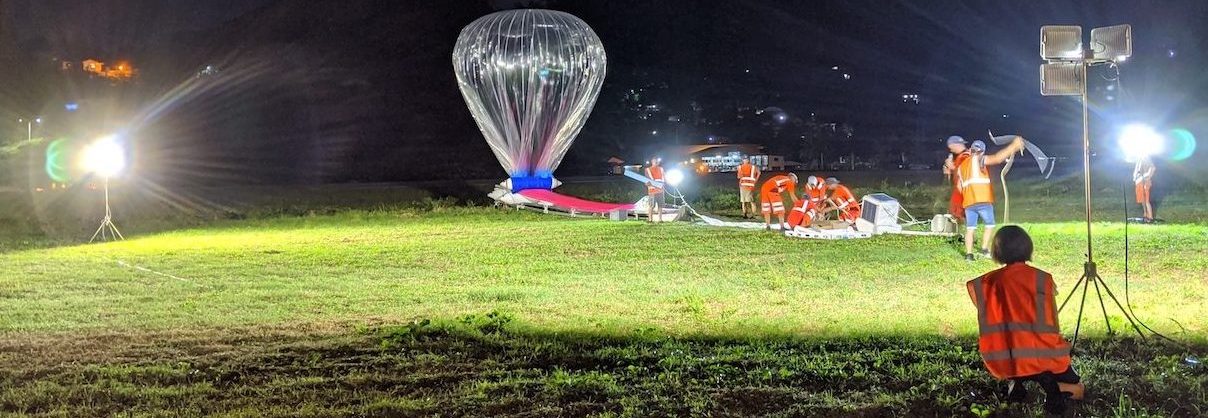STRATÉOLE-2 is a project designed to study the middle atmosphere at the equator. The project is led by CNES and LMD in France and includes researchers in the United States funded by the National Science Foundation as well as partners from several other countries. The team will be launching dozens of super pressure balloons capable of staying aloft for over 3 months at altitudes of 18 to 20 km over the course of three field campaigns. The first science campaign is scheduled for winter 2021-2022.
Earth’s equator is where our planet’s most powerful atmospheric events occur, and their effects can be observed as far as the polar areas. However, many of these events are only poorly understood and are consequently not well represented in meteorological and climate models. To fill this data gap from a remote area not covered by other sensing systems, the Stratéole-2 project plans to launch several balloons from the Indian Ocean. Two scientific campaigns are scheduled; one between November 2021 and April 2022, the second between November 2024 and April 2025.
Each campaign will launch 20 helium-filled transparent super pressure balloons, spanning 11 to 13 meters and capable of staying aloft at an altitude of 18 to 20 km for over 3 months, thus circling the Earth along the equator 2 to 3 times to collect a wealth of data.
Some observations (temperature, wind, pressure) will be sent in near-real time to the World Meteorological Organization (WMO) to improve weather forecast in tropical regions. With its renowned expertise in scientific ballooning, CNES is playing a central role in the Stratéole-2 project, working in close collaboration with several French and American laboratories, including the LMD dynamic meteorology laboratory, which is the lead scientific institution on the project and the Laboratory for Atmospheric and Space Physics, Scripps Institute for Oceanography, North West Research Associates and the Nation Oceanic and Atmospheric Administration in the US. The US contribution to the project is funded by the National Science Foundation. The European Space Agency (ESA) also taking part in the mission to validate the Aladin instrument, scheduled to launch in late summer 2018 aboard the Aeolus satellite. Other instrument calibration and validation operations are being discussed. Stratéole-2 is also part of the WMO’s SPARC climate programme.
